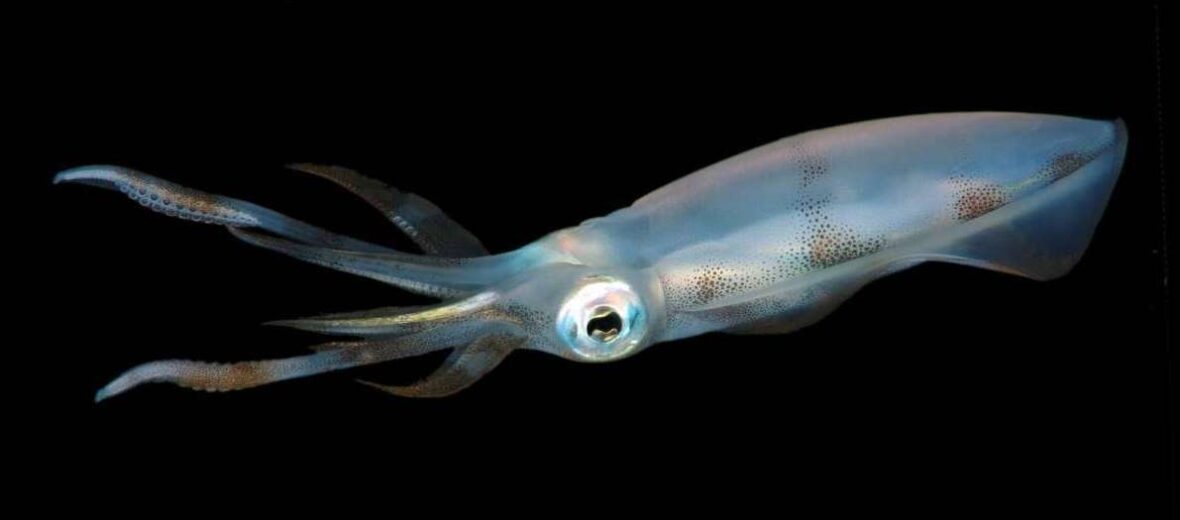
There are over 300 known species of squid. This article will talk about the fascinating squid, in general; no specific species. These cephalopods all have elongated bodies, big eyes, 8 arms and 2 tentacles. Some even have up to 10 arms. As the old joke goes: How do you make a squid laugh? You give it tentacles (10 tickles). Squids are among the most intelligent of all invertebrates.
First the Stats…
Scientific name: Teuthida
Weight: Up to 1,000 lbs.
Length: Up to 60 feet
Lifespan: Up to 1.5 years
Now on to the Facts!
1.) Squids are soft-bodied, but they actually do have a tubular skeleton-like structure inside their body.
2.) A testament to their intelligence, some squids have actually been documented hunting cooperatively.
3.) You can find them in every ocean around the world. You can even find them in the freezing Arctic and Antarctic oceans.
4.) Like fish, they breathe through gills.
5.) All squids have 3 hearts.
But wait, there’s more on the squid!
6.) Many have a defensive ink sac that is expressed to cloud the water in an effort to make a quick getaway.
7.) When remains have been found in the stomach of larger predators, only their beak remains undigested.
Did you know…?
When necessary they can propel themselves through the water, via a jet stream, at up to 35 mph!
8.) The Humboldt squid is so aggressive that it has been documented attacking sharks.
9.) The largest in the world is the colossal squid, measuring up to 60 feet and weighing in at up to 1,000 lbs! The smallest is the sepiolid squid that only measures less than 1 inch and weighs less than 1/4 of an ounce!
10.) Certain deep sea squids have the ability to be bioluminescent. This ability is possibly used for prey luring or finding a mate.
But wait, there’s still more on the squid!
11.) Sharks, fish, sea birds, seals, cetaceans (whales), and humans all prey on them.
Did you know…?
There are some species that live at 13,000 feet deep, in the ocean!
12.) They have the ability to change their coloration in mere seconds. This is due to the chromatophores in their skin.
13.) They’re diverged from crown coleoids during the Jurassic period, but many families appeared during or after the Cretaceous period.
14.) Their skin also has light reflectors called iridophores & leucophores that can be activated in milliseconds and create changing skin patterns of polarized light. This allows them to blend in with all kinds of surroundings.
15.) The primary prey of squids are fish and crustaceans. They use their tentacles to snare their prey and their arms to hold it in place, while they use their beak to tear apart the food into bite sized chunks.
Now a Short Squid Video!
Be sure to share & comment below! Also, check out the Critter Science YouTube channel. Videos added frequently!
Want to suggest a critter for me to write about? Let me know here.




Leave a Reply